Marcus Vinicius Avelar1
University of Colorado, Boulder
1. Introduction
The present article analyzes code-switching between Standard Brazilian Portuguese and the so-called Caipira dialect by native speakers of the Caipira variety on the radio and on national TV. Caipira speakers tend to be monolingual (cf. Leite 2004, 2010), even though they switch to Standard Brazilian Portuguese occasionally. My aim is to understand in which circumstances and with what purposes people switch between these two codes when speaking in the public arena. The motivating question of this study is: Who speaks which variety to whom and when? I argue that the speakers in the corpus use code-switching strategically to index their multiple identities and that phonological code-switching does not entail syntactic code-switching, and vice-versa. I also highlight that linguistic alignment may be used by speakers to index a more cooperative or belligerent disposition. Finally, I claim that speaker-centered frameworks are more accurate to capture these linguistic practices. However, before we get to the conclusions it is necessary to clarify what are some of the most salient features of the Caipira dialect, and also to understand the Brazilian sociolinguistic landscape.
This article is organized as follows: In section 2, I describe some linguistic features of the so-called Caipira dialect, and contrast them to those of Standard Brazilian Portuguese. The aim of section 3 is to familiarize the reader with the Brazilian context. In this section, I comment on selected aspects of the linguistic economy of Brazil, and the place that Caipira occupies in it, as well as some matters that must be addressed when studying language variation in Brazil. Section 4 is dedicated to the contextualization and presentation of a corpus consisting of two interviews, which is subsequently analyzed in light of the pragmatic factors involved in code-switching. Findings and remaining research questions are presented in Section 5.
2. The so-called Caipira dialect and Standard Brazilian Portuguese
Although a handful of studies of Brazilian Portuguese tend to ignore the dialectology of the country (Teyssier, 2001), some scholars have addressed this matter, and are working on the elaboration of a national linguistic atlas (Cardoso, 2009). Among them, there are those who have investigated the so-called Caipira dialect (Amaral, 1920; Castro, 2006). The Caipira dialect is spoken in most of what used to be the Capitania de São Paulo in colonial times – a territory comprising the current States of Paraná (in the South) São Paulo, and portions of Minas Gerais (in the Southeast), Mato Grosso, Mato Grosso do Sul, and Goiás (in the Mid-West) and Rondônia, and Tocantins (in the North). Needless to say, this enormous territory encompasses dialectal varieties in their own right, and authors are not always in agreement when enumerating the core features of the Caipira dialect. Researchers seem to agree, however, on some defining characteristics2:
2.1 The pronominal system
In the Caipira dialect, nominative and accusative pronouns are usually morphologically identical, with two exceptions: the first and second persons in the singular, as shown in the table below:
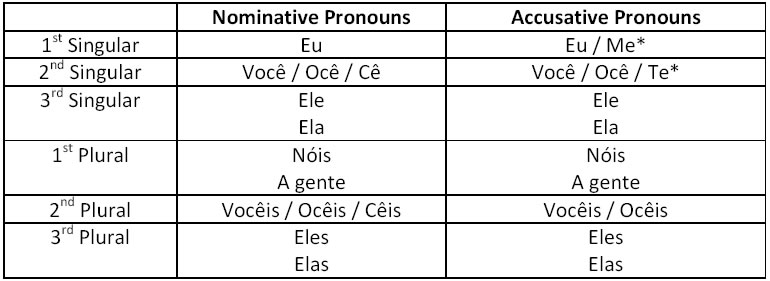
Table 1: Nominative and accusative pronouns in the Caipira dialect. The asterisk indicates a phonological clitic whose position in the sentence differs from the other pronouns
The unmarked word order is Subject+Verb+Object:
2.1a)
A gente chamou ocê
We called you
However, if the pronoun marked with an asterisk is chosen, the order has to be Subject+Object+Verb:
2.1b)
A gente te chamou
We called you
The word order changes because the forms “me” and “te” are unstressed and function as phonological clitics.
The pronominal inventory of Standard Brazilian Portuguese (henceforth: SBP) is slightly different:
In SBP, all accusative pronouns are phonological clitics which usually precede the main verb. Even though the pronouns “lo”, “la”, “los”, and “las” present a different behavior (they follow the verb), the phonological pattern remains the same. The /l/ in the latter pronouns is epenthetic and avoids a sequence of two vowels.
2.1c)
Eu a conheci ontem
I met her yesterday
2.1d)
Eu gostaria de conhecê-lo
I would like to meet him
2.1e)
Ele nos viu de manhã
He saw us in the morning
This topic calls for a note of caution: although the pronominal inventories presented here are commonly associated with either the Caipira dialect or SBP, the picture is not so black and white. The Caipira pronominal inventory seems to be shared by other non-standard dialects; moreover, standard and non-standard varieties may overlap. I shall revisit this topic in section 3.2.
2.2 Plural marking
In noun phrases in Caipira, the determiner is the sole element marked for plural3:
2.2a)
Os menino
The boys
2.2b)
As casa amarela
The yellow houses
Whereas in SBP all the elements of the noun phrase must be morphologically plural:
2.2c)
Os meninos
The boys
2.2d)
As casas amarelas
The yellow houses
Aside from these distinctions, verbal morphology in Caipira differentiates the first person singular and the others, whereas in SBP there are further distinctions:
2.3 Lexical phonology
Caipira prefers unvoiced consonants in consonantal clusters where SBP prefers their voiced counterparts, and sometimes, the place of articulation does not coincide between Caipira and SBP. For instance, the phonemic transcriptions of the word perda (loss) are /perka/ and /perda/ in Caipira and SBP, respectively.
2.4 Adverbial inflection
In SBP adverbs are never inflected for number or gender. In Caipira, they are never inflected for number either, but may be for gender, as shown below:
2.4a) Caipira
Nessa semana tem menos carro estacionado por aqui
This week there are fewer (masc.) cars parked around here
2.2b) SBP
Nessa semana tem menos carros estacionados por aqui
This week there are fewer cars parked around here
2.4c) Caipira
Hoje a gente tem menas coisa pra fazer
Today we have fewer(FEM) things to do
2.2d) SBP
Hoje nós temos menos coisas pra fazer.
Today we have fewer things to do
2.4e) Caipira
O correio tá meio cheio
The post office is somewhat (MASC) full [of people]
2.2f) SBP
O correio está meio cheio
The post office is somewhat full [of people]
2.4g) Caipira
A sala tá meia vazia
The room is somewhat (FEM) empty
2.2h) SBP
A sala está meio vazia
The room is somewhat empty
2.5 Gerunds
All gerunds in SBP present the sequence /nd/. In Caipira, the /d/ was assimilated to the nasal /n/ and is not produced.
2.6 The phoneme /r/ in syllabic coda
The Caipira pronunciation of the /r/ in codas is probably the most well-known feature of the dialect by non-Caipira speakers. The /r/ is traditionally produced as the retroflex approximant [ɻ], and sometimes as the alveolar approximant [ɹ] or as an r-colored vowel. These allophones are not observed in any other Brazilian dialect.
It is hard to define what the standard allophone of the /r/ in codas would be. It is usually easy to tell the geographic origin of a speaker solely by her pronunciation of the /r/, which means that each dialect has its own allophone(s). In addition to the three aforementioned allophones, some possibilities are: [h], [x], [r], [ɾ], [ʀ], and [ʁ]. However, on national television (news, soap operas, and dubbed films) it is customary for people to produce the rhotics in codas according to the Fluminense4dialect: [h]. Also on national TV, it is the norm for people to produce the phonemes /s/ and /z/ the way they would be produced in São Paulo: [s] and [z], respectively5
Nevertheless, the previous statements are not exempt from problems. Before we approach this topic, it will prove useful to comprehend some of the Brazilian linguistic landscape, and what place the retroflex approximant occupies in it.
3. A continental (and monolingual) country
Given the gigantic dimensions of Brazil6, it would seem reasonable to assume that linguistic varieties would be as abundant as ecosystems. Linguistic practices do vary, but the monoglossic ideology is alive and kicking.
Since colonial times, the Brazilian territory has been subject to occasional legislations on language use and also quite intolerant to linguistic practices that were not officially allowed. From the 1950’s onwards, the federal government has apparently restrained from directly interfering in language planning. Nevertheless mass media and schools have taken the responsibility of standardizing Brazilian Portuguese. Different language policies have been successful in establishing a standard language from a morpho-syntactic standpoint, but not so fortunate when it comes to prescribing pronunciation. For instance, there is a preference for [h] as the allophone of /r/ in codas in the media and also for [s] and [z] as the allophones of /s/ and /z/, but people do not normally produce [h], [s], and [z] in face-to-face interactions unless these allophones are part of their own dialectal inventory.
3.1 Silencing the unwanted elements
It was not until the mid-18th century that Portuguese (or a dialect of it) became the majoritarian language in the Portuguese American Colonies (Faraco, 2008; Teyssier, 2001). Until then, the population commonly spoke Lingua Geral, an indigenous lingua franca fostered by Jesuit priests and taken into the then Spanish America by the bandeirantes, pioneers from the Capitania de São Paulo whose aims were to expand borders, enslave Indians, and search for gold. Under the Marquis of Pombal, however, things changed. The Jesuits were expelled, and the Capitania de São Paulo was broken down in many different provinces.
The next great turning point occurred between 1937 and 1945, during the second (and last) period of the authoritarian rule of Getúlio Vargas. At the time, immigrants from all parts of the world (mostly Europe and Asia) were accustomed to speak their native language at home or within their communities, and Brazilian Portuguese when interacting with members of other groups (Bueno 2006, Fritzen 2007), a situation similar to Fishman’s (2000a) depiction of speech communities where bilingualism and diglossia co-occur. Nevertheless, this situation changed when Getúlio Vargas prohibited the use of German, Italian and Japanese across the country, whether in private or public spheres. Disobedient citizens faced physical punishments.
Bueno (2006) and Fritzen (2007) provide lively accounts on how this policy affected their families, as well as the consequences that heritage speakers of Japanese and German still face in some villages7. Children were terrorized at school, people were mocked and discriminated against because of their “accent”, and bilingualism was considered a plague. All the same, some linguistic practices persisted and there are bilingual groups until today – after all, it is not always easy to tame a wild tongue (Anzaldúa, 1990). All in all, the schooling of bilingual pupils (or monolingual ones who only speak a “foreign” language before starting school) is regarded as a necessary step in order to adjust them to the Brazilian monoglossic society (Fritzen, 2007).
Encounters between monolingual speakers of Brazilian Portuguese and their Spanish-speaking neighbors are not necessarily pacific either. Amâncio (2007) investigated socio-linguistic attitudes in three bordering cities: two in Brazil and one in Argentina. As it is customary in Brazil, the international border is not guarded, but celebrated. The three municipalities are called “the triplet cities” by local authorities in an effort to promote tourism, and if one wants to go from one city to the other, one just needs to cross the street. Nonetheless, according to Amâncio this free transit is blocked by linguistic walls policed by locals. Brazilians in the area are known for their refusal to speak Spanish, and Argentines speak Brazilian Portuguese both in Brazil and in Argentina, when interacting with a Brazilian. This arrangement is mutually beneficial: it prevents Brazilians from speaking a language they perceive as inferior, and keeps Argentines safe from alleged foreign corruption of their native tongue. But what can be said about contexts where bilingualism is not an issue?
3.2. Linguistic norm, linguistic uses
According to Faraco (2008), mass media, particularly radio and television, have been responsible for broadcasting, and therefore popularizing, a pasteurized version of Brazilian Portuguese8 which reflects the linguistic practices of less than 10% of the population of the country. Furthermore, the author argues that the grammatical norm taught at schools is both artificial (in the sense that it recognizes a language that does not, and has never existed) and outdated (since it has elements of the medieval periods of Portuguese).
Faraco acknowledges that day-by-day language practices are more complex than the language used by the media. Following Bortoni-Ricardo (2005), the author suggests that linguistic practices in Brazil should be analyzed as the interplay of three different continua: (i) rural-urban, (ii) orality-literacy, and (iii) stylistic monitoring. Departing from this standpoint, it is possible to realize that part of the repertoire of accusative pronouns presented in section 2 (and their morphossyntactic behavior) is not exclusive to the Caipira dialect. Moreover, it also provides tools to understand that, in the Gaúcho dialect, it is verb inflection, and not pronoun alternation, that indexes proximity or distances between interlocutors. Faraco is not alone in his efforts to acknowledge the complexity of linguistic practices in Brazil.
Marcos Bagno has a prolific production on the making of a national linguistic norm, and the subsequent forging of tools to ensure its symbolic legitimacy. According to Bagno (1999, 2000, 2001, 2003, 2009), the monoglossic ideology in Brazil is so strong that people are led to believe that the prestigious norm is the only “true” Portuguese that there is, all the other varieties being equally wrong and corrupted. Bagno claims that the observable plurality of linguistic norms (including the official one) is known by the elites, and skillfully manipulated by them, so their own Vernaculars are validated.
Indeed, there are many norms that coexist and compete on occasion. These norms may have scope over various levels of analysis (phonetics, phonology, morphology, syntax, semantics, etc.), or just over one of them. An example is the production of the phoneme /r/ in syllabic coda in the State of São Paulo.
3.3. How do you say /pɔrta/?
To say that the pronunciation of the phoneme /r/ in codas is the most salient feature of the Caipira dialect is a truism to each and every native speaker of Brazilian Portuguese. The retroflex approximant is a highly stigmatized phone. On the one hand, this fact may prevent subjects from producing it when interacting with speakers of other dialects. On the other hand, however, the production of a stigmatized variety may function as an index of (proud) group membership (Blom & Gumperz 2000, Bourdieu 1996, Kelly-Holmes & Atkinson 2007, Romaine, 1995).
Leite (2004, 2010) reports a remarkable research on the /r/ in codas, which comprised acoustic analysis and sociolinguistic interviews with speakers from the city of Campinas (the biggest one on the countryside of the State of São Paulo, with over 1 million inhabitants, and self-proclaimed “capital of the countryside”), and also from other cities in the same State. All the participants were on the urban, literate, and highly monitored poles of the continua proposed by Faraco and Bortoni-Ricardo. In theory, this constellation of social, economic and linguistic statuses is a sign of symbolic power in its own right, and automatically places the informants ahead in the linguistic market (Bourdieu, 1996). But did Leite’s informants behave accordingly to these theoretical predictions?
Leite’s investigation has two very interesting findings. In the first place, she demonstrated, via acoustic analysis, that all informants produced the retroflex approximant to some extent, regardless of their hometown, time of residence in the city of Campinas, or field of study. The production of [ɻ]’s remained significant even in the most self-monitored part of the interview, when informants were asked how their peers evaluated the way they spoke.
Secondly, it is striking that all participants who felt embarrassed by their own pronunciation of the phoneme /r/ searched for a very specific group of alternatives to the retroflex approximant. They produced alveolar approximants (considered more neutral by them), sometimes r-colored vowels, and more rarely [ɾ]. This fact is striking because all of these allophones, but the tap, are easily identifiable as Caipira. Within the Caipira dialectal spectrum, the [ɾ] in codas is frequent only among some inhabitants of the city of São Paulo.
Some of these informants were trying to soften a stigmatized pronunciation, but not to wipe it out. The Caipira identity was maintained throughout the experiments, as shown not only by the allophones chosen by the speakers, but also by their discourse. Utterances such as “I’m from São Paulo” and “I’m from the countryside” were always present. Statements such as “I’m Caipira”, and “This is the way I talk, and I’m not changing it” were less frequent, but were also present.
Based on this data it is safe to assume that there are no unmarked choices here. The informants would switch from one more marked to a less marked phonetic variety, but never to a neutral one. These findings converge to Myers-Scotton (2000) theoretical assumptions according to which there is “a markedness continuum: speakers operate with degrees of markedness, not categorical distinctions” (p. 140).
But what would be a neutral alternative to these allophones? As it was said in section 2.6, on national TV it is customary for people to produce the phonemes /s/ and /z/ the way they would be produced in São Paulo. The rhotics, on the other hand, tend to be produced according to the Fluminense dialect. Therefore, resisting to a nationally neutral pronunciation is also to resist to allophones present in the dialect of the nemesis9.
However, the hypothesis raised in the previous paragraph is nothing but speculation, and needs to be tested; what can be affirmed is that no neutral choices were made by the informants. We shall now move to the two pieces of interview to be analyzed and identify some of the moments when the interlocutors code-switch.
4. Code-switching on the radio and TV
Carlos Roberto Massa, also known as “Ratinho”, is a Brazilian entrepreneur, radio personality, TV host, and former politician, born in Águas de Lindóia, São Paulo. His polemic and popular TV show was broadcast on national TV from 1997 to 2007, and resumed in 2009. He is known for his spontaneous style, which often includes full-fledged demonstrations of the Caipira dialect – something not common on daily TV shows – and conservative statements. He has already been sued for many misogynistic comments.
For this study, I selected two interviews of Ratinho in two different media forms. The first one was broadcast on the radio show Pânico! (Massa and Surita, Ratinho fala sobre Maísa), hosted by Emilio Surita, and the second was on Marília Gabriela Cochrane’s television show De Frente com Gabi (Massa and Cochrane, De frente com Gabi – Ratinho). Both shows have very different target demographics, and their linguistic practices are quite distinct.
Both extracts correspond to the intermediary portion of the interviews. The sample of Pânico! lasts 6 minutes and 14 seconds, whereas the piece with Marilia Gabriela is 15 minutes and 44 long.
4.1 Code-switching on the radio
Pânico! airs from 12pm to 2pm from Monday to Friday, in 18 States and the Federal District. The show targets a younger demographic, usually teenagers, and is characterized by the extensive use of idioms and slang, especially when there is interaction among the co-hosts. The interviews are moderated by Emilio Surita, who is from São Manuel, São Paulo.
Since both Surita and Ratinho are speakers of the same variety, and are in a (theoretically) informal environment, one could expect meaningful occurrences of Caipira features in their speech. Such occurrences took place indeed in the sample analyzed, but in a very particular way.
The only characteristics of the Caipira dialect in Surita’s speech were the gerunds and the retroflex approximant. Surita chose the standard options for the other characteristics mentioned in section 2. Ratinho, on the other hand, exhibited more features of the Caipira variety.
In the sample analyzed, there were sixteen occurrences of gerunds, eleven produced by Ratinho and five by Surita. There were both Caipira and SBP gerunds and their distribution is shown below:
Concerning phonetics, it was possible to identify four of the allophones of /r/ in codas. Ratinho produced retroflex approximants:
In the example above, it is worth to notice that the standard production of the gerund did not prevent Ratinho from using a Caipira allophone. Ratinho also produced taps, always on word borders:
The production of r-colored vowels was also observed:
All these three allophones lie within the repertoire of Caipira speakers. The allophones produced by Surita were also consistently Caipira. The host produced mostly retroflex approximants:
Surita also produced r-colored vowels, usually when his speech rate was relatively faster:
Regarding grammatical structures, the preference varied. Surita consistently used SBP, whereas Ratinho code-switched.
The pronominal system used was the Caipira one:
4.1a) Caipira
mas eu reclamo, xingo ele [4’02’’]
But I complain, I curse him
4.1b) Caipira
brinca com ela, ama ela como se fosse neta dele [5’38”]
[he] plays with her, loves her as if she were his granddaughter
Plural marking varied:
4.1c) Caipira
Eu mostro hoje dez mil criança passano fome [5’49”]
I show today ten thousand kids starving
4.1d) SBP
Já que aquelas mil crianças não são [5’55”]
Since those thousand kids are not
4.2 Code-switching on TV
Marília Gabriela Cochrane, born in Campinas and raised in Ribeirão Preto, both in São Paulo, is one of the most famous interviewers in Brazil. In the 1980’s her image was associated with that of feminist and modern women, and she also made a prestigious career as an interviewer on cable TV. She currently presents a show on a cable network (GNT), and another one out of the cable system: De Frente com Gabi, on SBT, which airs at midnight on Wednesdays. Her target audience is older than that of Pânico!, wealthier and more educated.
In the excerpt analyzed, which aired on April 13th, 2011, Marília Gabriela’s use of Standard Brazilian Portuguese was consistent. Her production of the /r/ in codas comprised r-colored vowels, identified by Leite (2004, 2010) for Caipira:
However, most of the time she produced [h]’s, typical of Brazilian TV hosts.
Ratinho produced r-colored vowels:
And also alveolar approximants:
The production of retroflex approximants was abundant:
Right after Ratinho pronounced the word rurbano with a retroflex approximant, Maria Gabriela repeated it with a trill, which is not common in Caipira nor in SBP:
Regarding grammar, Marilia Gabriela used SBP throughout the whole sample and Ratinho code-switched. In Ratinho’s speech, the morphology of adverbs was ambiguous:
4.2a) Caipira
Retomei com menas intensidade [3’34”]
I resumed them less frequently
4.2b) SBP or Caipira?
O Silvio pediu pra gente fazer menos DNA na época [5’40”]
Silvio asked us to perform fewer DNA tests at the time
Since both the standard morphology for adverbs and the masculine morphology in Caipira coincide, it is not possible to assure that in (4.2b) Ratinho was resorting to either Caipira or SBP.
Moreover, his use of accusative pronouns also varied:
4.2c) Standard
O meu maior sonho era conhecê-lo [0’27”]
My biggest dream was to meet him
4.3d) Caipira
Eu me apavorei o dia que eu vi ele [0’30”]
I was scared to death the day I [first] saw him
4.3e) Caipira
É difícil um radialista falar mal de mim. Ele sabe que eu pego ele depois [11’34”]
It’s hard for a radio personality to trash me. He knows I’ll go after him afterwards.
4.4f) Caipira
Eu sou fã dele. Eu leio sempre ele. [12’13”]
I’m a fan. I always read him.
4.5g) Standard
Eu não fui pra agradá-lo, fui pra condená-lo também [13’57”]
I didn’t go there to please him, I went there to judge him too
4.5h) Caipira
Só que eu tratei ele no programa como se trata um assasino [15’28”]
But I treated him on the show the way you treat a murderer
How to make sense of this data in the context of the interviews?
5. Conclusions
A possible way to look at this data is through the theory of situational code-switching, as proposed by Blom & Gumperz (2000). Although the interlocutors (Surita, Marília Gabriela and Ratinho) are all speakers of the same linguistic variety, their listeners are scattered all over the country, and speak their own varieties of Brazilian Portuguese. Therefore, one would make an effort and code-switch in order to accommodate one’s speech to the listener. On the one hand, this hypothesis explains why Surita used different paradigms within different areas of grammar: he resorted to SBP when the use of Caipira would be difficult for hearers to comprehend. On the other hand, it does not explain why Surita chose to stick to phonetic and phonological features of Caipira on the radio. On top of that, the theory of accommodation explains why Marília Gabriela was consistent in her use of SBP, but leaves out the reasons why Ratinho switched so much between two different pronominal paradigms.
An explanation based solely on the media would be even more limited. Since the three interlocutors are well used to speaking on TV, and Surita and Ratinho are particularly accustomed to talking on the radio, there would be no clear reason for the switching between varieties. Perhaps dislocating the focus from the hearer to the speaker might be useful.
Myers-Scotton (2000) proposed an explanation for code-switching based on the assumption that every speaker knows a “markedness model of code choice” (p. 160). According to this model, linguistic choices are negotiations, since each and every member of a given speech community is aware of the probable consequences of their speech acts (i.e., social interpretations and conversational implicatures).
From this perspective, the interaction between Surita and Ratinho can be analyzed as a dialogue between two people who master the grammar of SBP (are urban and literate, as Faraco 2008 would say), but maintain their roots by showing features of the Caipira dialect where they are more prominent: the phonetic and phonological components. Additionally, Romaine (1995) reminds us that the switch itself might be important. That being so, Ratinho’s final switch (examples 4.1c and 4.1d) may be considered a move to demonstrate that he masters SBP grammar as much as the host, thus keeping footing (Goffman, 2002). The interaction between Ratinho and Marília Gabriela is more complex.
The interaction with Marília Gabriela is quite different. Here, the host’s choice of SBP may be considered the less marked one, given her profile and target demographic. As a consequence, Ratinho’s general adherence to it would be nothing but an index of respect to the norms. Nevertheless, due to the almost divergent walks of life of Ratinho and Marília Gabriela, the apparently less marked choice of code is indeed saliently marked; its function is to create distance between the host and the guest. Despite her use of /r/ allophones frequent in São Paulo, Marília Gabriela also uses the [h] phone, and is never joined by Ratinho in this endeavor. The guest, on the other hand, inflects an adverb and goes back and forth between pronominal paradigms.
Marília Gabriela and Ratinho use code-switching strategically to index their multiple identities (Bonvillain, 2008; Myers-Scotton, 2000; Romaine, 1995). It is vital to note that they do not do so in a non-conventionalized exchange, where exploratory choices have to be made in search of a less-marked code (Myers-Scotton, 2000). The exchange is conventional and well known to both participants (since they are professional TV hosts).
5.1 To align or not to align
Pickering and Garrod (2006) conducted a series of experiments to study the role of alignment both in situation models and in linguistic representations. They concluded that alignment between interlocutors was not necessarily a conscious phenomenon, but probably the result of our biological tendency to imitate. Moreover, they also observed that “alignment was the basis for successful communication in dialogue”. This means that accomplishing a task was significantly more difficult when interlocutors were not able to align. In addition, this also means that if similar linguistic representations were not shared by the interlocutors, their communication was unlikely to be successful.
In the conversation between Surita and Ratinho, both interlocutors shared a significant amount of linguistic representations. In spite of diverging in syntax, Surita and Ratinho produced statements using the Caipira phonology. The phenomenon of imitation took its place in a positive way, encouraging a cooperative dialogue.
However, alignment was not the highlight of Ratinho’s interaction with Marilia Gabriela. Marília Gabriela’s use of the phone [h] locates herself in a supra-dialectal space. Ratinho’s switching between inflectional and pronominal paradigms indexes that he occupies a more-or-less distinct social territory than that of the host. On top of that, after only 1 minute and 34 seconds from the beginning of the extract (that lasted 15 minutes and 44 seconds), Ratinho says “rurbano” with a retroflex approximant. The host laughs and immediately repeats the word using a trill. There are two processes taking place here: on the one hand, Marilia Gabriela bluntly refused to imitate Ratinho’s pronunciation, thus compromising alignment; moreover, the host used a phone, the trill, that is neither in the Caipira nor in the SBP phonological inventory. The distance between the actors was established at the very beginning and amplified during the interview. In sum, it was a civilized cold war colored with smiles.
5.3 In sum
We can learn three things from the previous data. Firstly, phonological and syntactic code-switching do not necessarily coincide, and one does not entail the other. Secondly, code-switching may be used by speakers to index their multiple identities. In the third place, linguistic alignment may be used for cooperative purposes, whereas linguistic misalignment may be used for belligerent ones. Since, apparently, speakers use code-switching and alignment to index their identities and dispositions, speaker-centered accounts seem to be more accurate to capture these linguistic practices.
Notes
1 I would like to thank Eva Fernández for her helpful conversations and feedback on previous versions of this paper. Any remaining erros are my own.
2 The following considerations are based not only on the previously-mentioned references, but also on my linguistic knowledge as a native speaker of Caipira.
3 The lack of plural marking in nouns within quantifier-phrases in many varieties of spoken Brazilian Portuguese has led some scholars to postulate that all nouns are mass in BP (Paraguassu 2005, 2010).
4 Spoken in the States of Rio de Janeiro, Espírito Santo and portions of Minas Gerais.
5And not as [ʃ] and [ʒ], which are the allophones for /s/ and /z/ in codas in the Fluminense dialect.
6 The Brazilian territory has more than 8.5 million square kilometers, stretches from above the Equator to below the tropic of Capricorn, has borders with all but two (Chile and Ecuador) of the other South American countries, and comprises nearly half of South America.
7 Apparently, Italian speakers do not carry the same stigmas. The reason for this is yet to be investigated.
8 Penny (2000) argues that Modern Spanish was created in a similar fashion, but the standard that was forged was more representative of the different dialects spoken at the time.
9 The rivalry between São Paulo and Rio de Janeiro is as folkloric as that between Brazilians and Argentines.
Bibliography
Amâncio, Rosana Gemima. As cidades trigêmeas: um estudo sobre atitudes linguístico-sociais e identidade. Campinas: Universidade Estadual de Campinas. Unpublished M.A Thesis, 2007.
Amaral, Amadeu. O dialeto caipira: gramática, vocabulário. São Paulo: HUCITEC-INL / MEC, 1982 [1920].
Anzaldúa, Gloria. “Hos to tame a wild tongue.” Ferguson, Russel et al. (eds). Out there: marginalization and contemporary culture. New York: The New York Museum of Contemporary Art, 1990. 203-211.
Bagno, Marcos. A norma oculta – língua & poder na sociedade brasileira. São Paulo: Parábola, 2003.
—. Dramática da língua portuguesa: tradição gramatical, mídia & exclusão social. São Paulo: Loyola, 2000.
—. Não é errado falar assim! Em defesa do português brasileiro. São Paulo: Parábola Editorial, 2009.
—. Português ou brasileiro? Um convite à pesquisa. São Paulo: Parábola Editorial, 2001.
—. Preconceito linguístico: o que é, como se faz. São Paulo: Loyola, 1999.
Blom, Jan-Petter and John J. Gumperz. “Social meaning in linguistic structure: code-switching in Norway.” Wei, Li (ed). The bilingualism reader. London: Routledge, 2000. 111-136.
Bonvillain, Nancy. Language, culture, and communication: the meaning of messages. 5th. New Jersey: Pearson Prentice Hall, 2008.
Bortoni-Ricardo, Stella Maris. Nós cheguemu na escola, e agora? – Sociolinguística e educação. São Paulo: Paráblo Editorial, 2005.
Bourdieu, Pierre. A economia das trocas linguísticas: o que falar quer dizer. São Paulo: Editora da Universidade de São Paulo, 1996.
Bueno, Alexandre Marcelo. Intolerância lingüística e imigração. São Paulo: Universidade de São Paulo. Unpublished M.A Thesis, 2006.
Cardoso, Suzana Alice Marcelino. “Projeto atlas linguístico do Brasil – Projeto ALiB: descrição e estágio atual.” Revista da ABRALIN Jan/Jun 2009: 185-198.
Castro, Vandersí Sant’Ana. A resistência de traços do dialeto caipira: estudo com base em atlas linguísticos regionais brasileiros. Campinas: Universidade Estadual de Campinas. Unpublished Ph.D Dissertation, 2006.
Faraco, Carlos Alberto. Norma culta brasileira: desatando alguns nós. São Paulo: Parábola Editorial, 2008.
Fishman, Joshua A. “Bilingualism with and without diglossia; diglossia with and without bilingualism.” Wei, Li (ed). The bilingualism reader. London: Routledge, 2000a. 81-88.
Fishman, Joshua A. “Who speaks what language to whom and when?” Wei, Li (ed.). The bilingualism reader. London: Routledge, 2000b. 89-108.
Fritzen, Maristela Pereira. Ich kann mein Name mit letra junta und letra solta schreiben: bilinguismo e letramento em uma escola rural localizada em zona de imigração alemã no sul do Brasil. Campinas: Universidade Estadual de Campinas. Unpublished Ph.D Dissertation, 2007.
Goffman, Erving. “Footing.” Ribeiro, Branca Telles and Pedro M. Garcez. Sociolinguística interacional. São Paulo: Eidções Loyola, 2002. 107-148.
Jaffe, Alexandra. “Corsican on the airwaves: media discourse in a context of minority language shift.” Johnson, Sally and Astrid Ensslin. Language in the media. London: Continuum, 2007. 149-172.
Kelly-Holmes, Helen and David Atkinson. “‘When Hector met Tom Cruise’: attitudes to Irish in a radio satire.” Johson, Sally and Astrid Ensslin. Language in the media. London: Continuum, 2007. 173-187.
Leite, Cândida Mara Britto. Atitudes linguísticas: a variante retroflexa em foco. Campinas: Universidade Estadual de Campinas. Unpublished M.A Thesis, 2004.
—. O /R/ em posição de coda silábica no falar campineiro. Campinas: Universidade Estadual de Campinas. Unpublished Ph.D Dissertation, 2010.
Massa, Carlos Roberto and Emilio Surita. Ratinho fala sobre Maísa. 27 05 2009. 5 April 2011 <http://www.youtube.com/watch?v=eqMgnfwaniU>.
Massa, Carlos Roberto and Marília Gabriela Cochrane. De frente com Gabi – Ratinho. 13 April 2011. 14 April 2011 <http://www.youtube.com/watch?v=JGApEJJVsNk>.
Myers-Scotton, Carol. “Code-switching as indexical of social negotiations.” Wei, Li (ed). The bilingualism reader. London: Routledge, 2000. 137-165.
Paraguassu, Nize da Rocha Santos. A contabilidade dos nomes no português brasileiro. São Paulo: Universidade de São Paulo. Unpublished Ph.D Dissertation, 2010.
—. A distinção contável-massivo no sistema nominal. São Paulo: Universidade de São Paulo. Unpublished M.A Thesis, 2005.
Penny, Ralph. Variation and change in Spanish. Cambridge: Cambridge University Press, 2000.
Pickering, Martin J. and Simon Garrod. “Alignment as the basis for succesful communication.” 2006. Research on Language and Computation. 3 May 2011 <http://www.psy.gla.ac.uk/docs/download.php?type=PUBLS&id=1097>.
Romaine, Suzanne. Bilingualism. 2nd. Oxford: Blackwell Publishing, 1995.
Teyssier, Paul. História da língua portuguesa. Trans. Celso Cunha. 2nd. São Paulo: Martins Fontes, 2001.
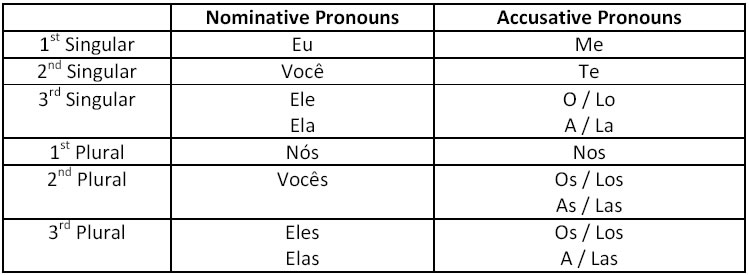



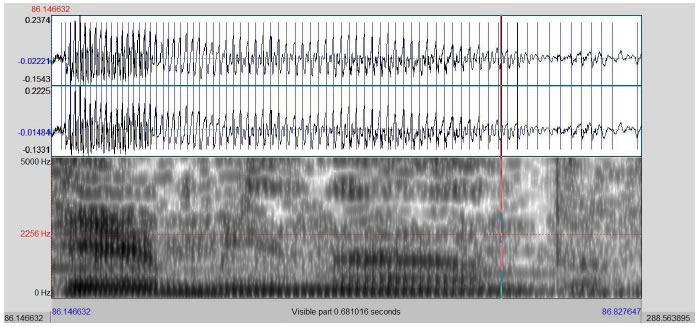

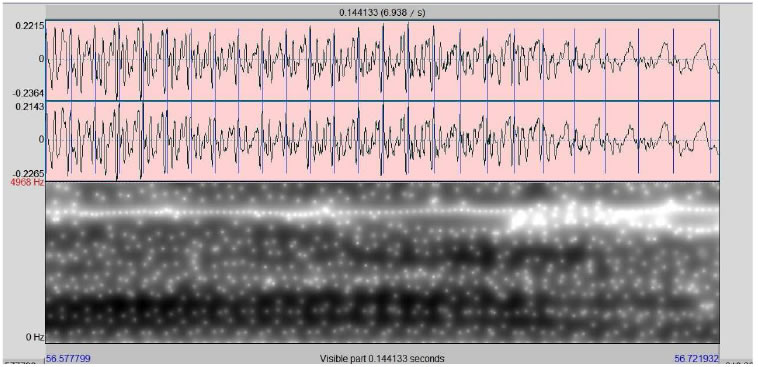
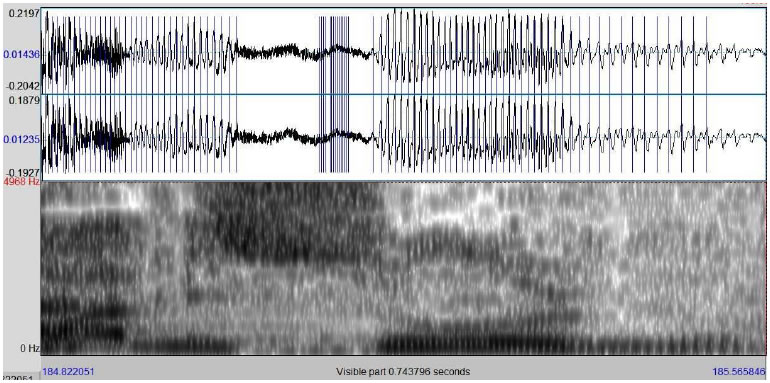

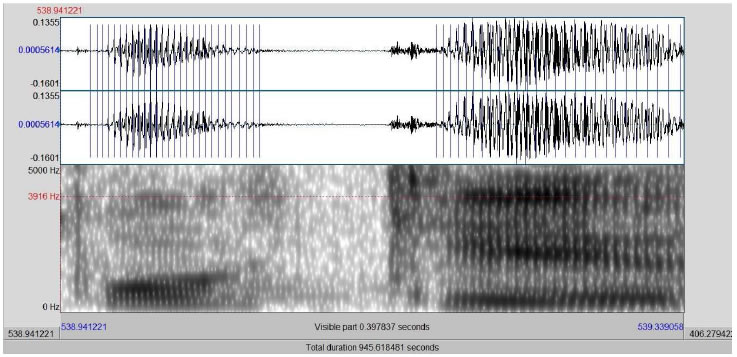
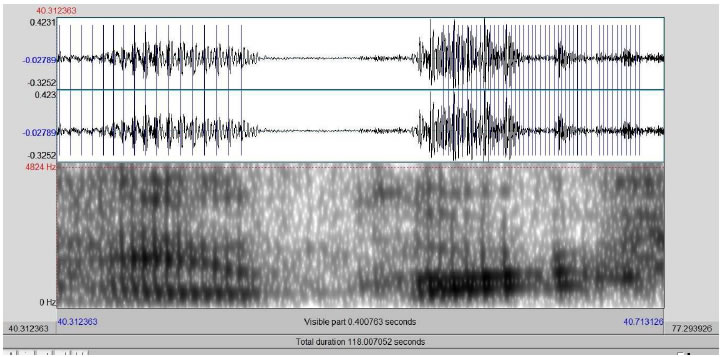
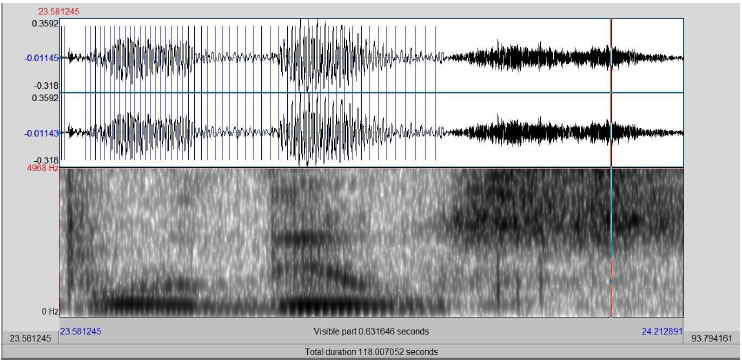

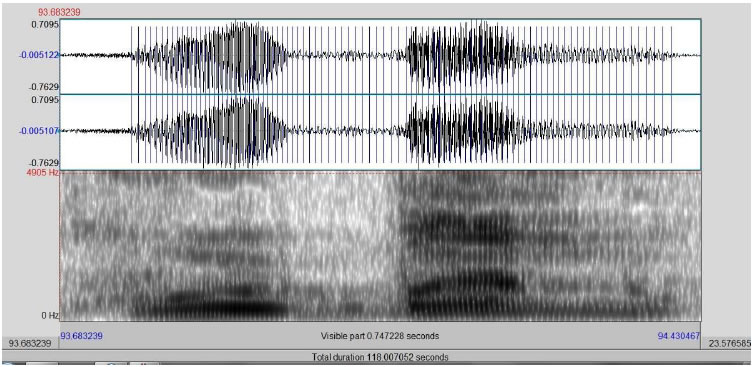
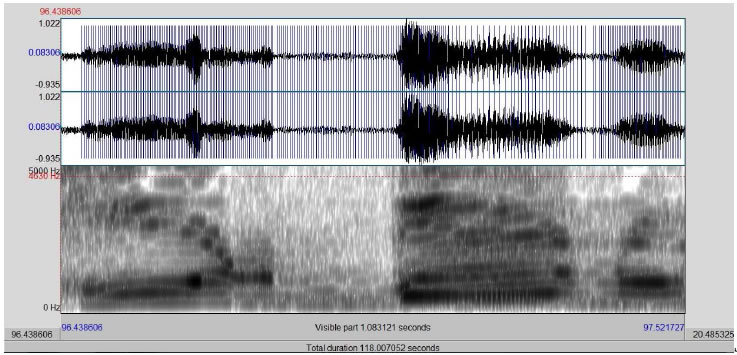


'CODE-SWITCHING, SPEECH ALIGNMENT AND LANGUAGE IDEOLOGIES IN THE BRAZILIAN MEDIA' has no comments
Be the first to comment this post!